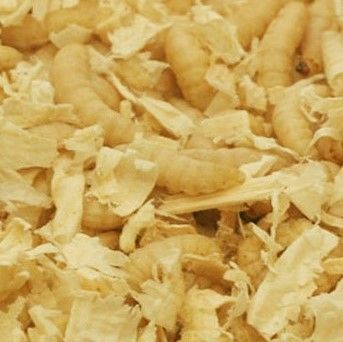

Special thanks to MSU’s Matt Grieship and Joe Tourtios for specimens. Photo credit: Heidi Wollaeger, MSU Extension.

Successfully infected wax worms will appear brick red. Successfully infected wax worms will be beige in color. The cadavers of the wax worms successfully infected will appear beige to dark red, depending on the species of nematode used for infection (Photos 1-2). After six days, check worms for infection. Store Petri dishes for six days in a dark place at room temperature. The nematodes consume the bacteria and complete one to three generations before they emerge from the dead insects seeking other hosts. Toxins produced by the bacteria cause blood poisoning of the insects usually resulting in their death within 72 hours. Endosymbiotic bacteria carried within the nematodes are released after they penetrate their hosts. The juvenile nematodes will enter and infect insects through their natural openings. First, place five live wax worms in a Petri dish with approximately 100 live nematodes, or 20 nematodes per host worm, with a few drops (0.5 mL) of de-ionized or boiled tap water. Numerous species of entomopathogenic nematodes can be reared with Galleria wax worms, including Heterorhabditis bacteriophora, Steinernema carpocapsae, Steinernema feltiae and Steinernema riobrave. Aquarium with bubbler or numerous shallow live culture flasks.mellonella wax worms from your local bait and tackle shop Rearing them yourself can save you money and prevent repeat ordering with your supplier. In the same manner that these nematodes invade their soil-borne hosts, nematodes can be bred in Galleria mellonella wax worms. In the nursery, nematodes can provide some control of root weevils, wireworms, cutworms, and spotty control of Japanese beetle grubs. Species of entomopathogenic nematodes, or round worms, have been shown to be beneficial for controlling many types of greenhouse pests, including fungus gnats, shore flies, and some control of western flower thrips.


 0 kommentar(er)
0 kommentar(er)
